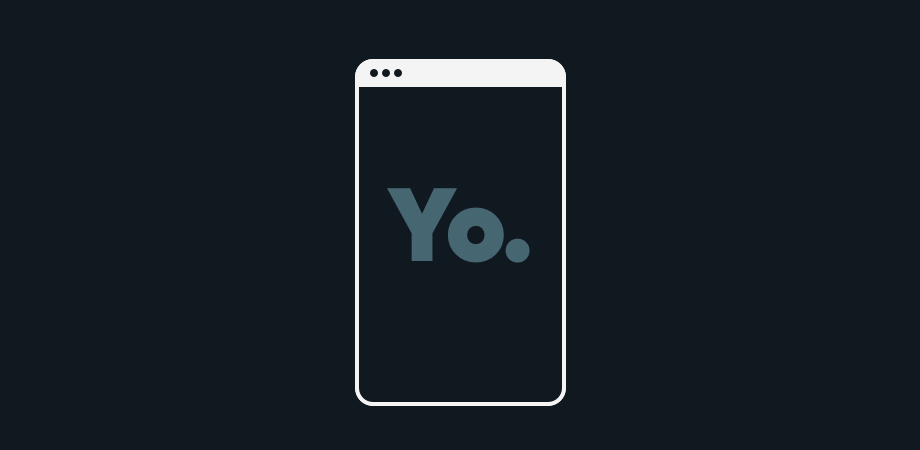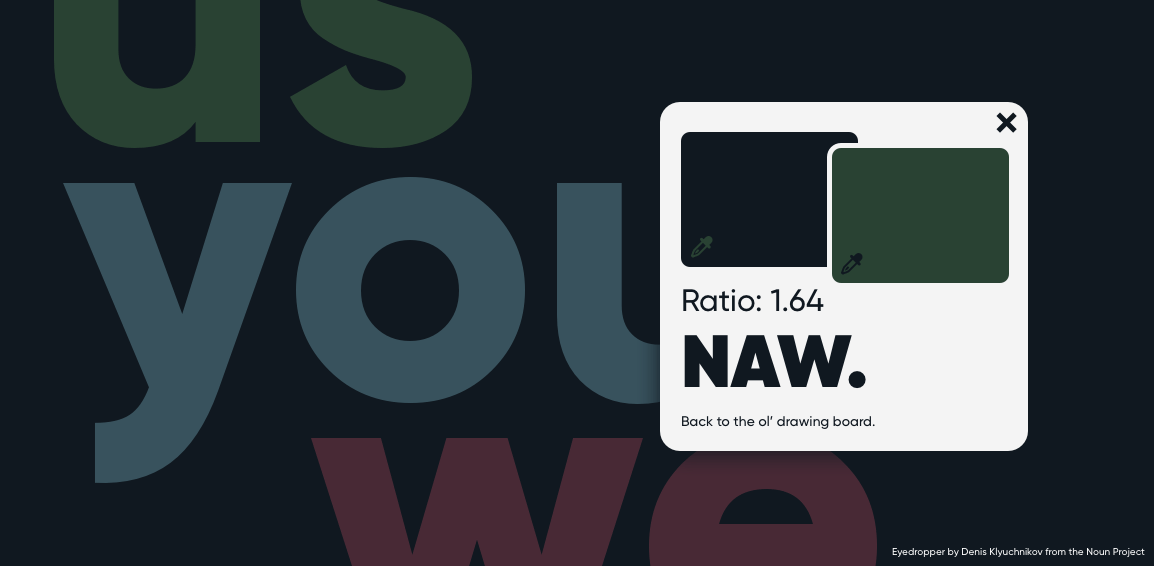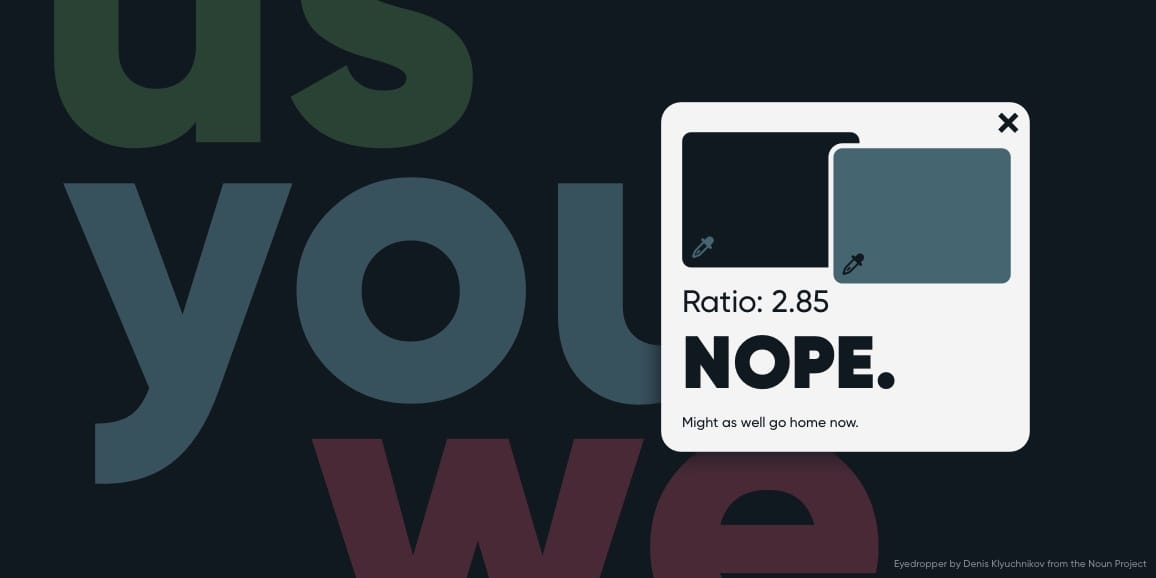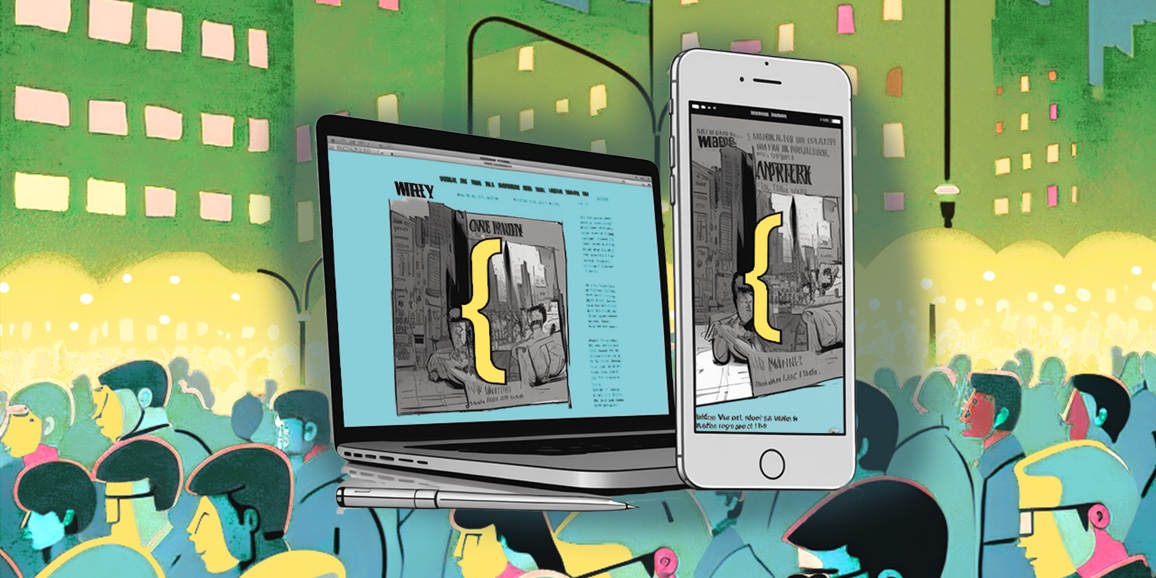Let's face it: Creating the ideal digital experience is hard enough without inviting more editors in the room. And yet, there's your designer with the perfect, eye-catching concept when some rep from legal throws cold water on hours of inspiration with a laundry list of concerns. As it turns out, some color choices in your layout could be invisible to the colorblind, and maybe that element moved too fast or ran counter to another accessibility guideline you hadn't considered. Just like that, there's a roadblock in front of the creative process.
What's your designer to do?
The answer is to adjust and evolve their thinking. Accessibility design doesn't leave us at the mercy of some concept-killing taskmaster who strips the heart from every project. Instead, designing for accessibility is an exercise in expansion. When implemented from the beginning, considering accessibility actually expands the creative process by facilitating greater collaboration as well as further exploration and experimentation with what's possible.
Accessibility design unlocks new creative possibilities
Part of what drew all of us to work in digital media was its sense of limitless possibilities. That wide-open potential for innovation and originality is why this industry should be leading the way in designing experiences for accessibility.
The promise of creating within new lines of communication open to all users is an exciting opportunity for both creative agencies and those looking to work with us. As designers, it’s our job to understand the perspectives of those we’re trying to reach with our work. Considering creative approaches through a lens other than our own doesn't restrict innovation; it fuels new approaches to ideas. At We The Collective, that prospect is the key motivation behind our commitment to integrating accessibility design into all of our work.
These challenges should be embraced for the opportunities they are. Evaluating creative decisions through experiences outside our own leads to a more collaborative environment and more impactful, innovative designs. More than any medium, the internet is built to be flexible, and there's a long-held pattern of operating under specific conditions that allows creative inspiration to flourish. In other words, the introduction of a box around a problem encourages us as designers to think outside of it.
Inclusivity isn't so much of a restriction as it is a powerful incentive to think differently. Instead of allowing disability considerations to disqualify a given idea, designers can open the experience further by allowing the user some control. That way, the reach of the message expands by unfolding into multiple formats responsive to audience input. This user-centered adaptability leads to the most inclusive campaigns.
Instead of dictating the terms of an experience to the audience, designing for accessibility allows every individual to experience it the way they need.
Designing for accessibility is now a mainstream opportunity
Remember when responsive design was beginning to grab a foothold in our industry? Ten years ago, the prospect of creating a web product that remained effective and intuitive on any device sent a shockwave through many companies.
"You mean I have to design how many different products for all these screen sizes and specifications? How the hell am I supposed to pay for that?"
In time, however, attitudes shifted. Audiences grew to expect a consistently satisfying digital experience on every platform. And, as search engines gave higher ranking to the websites that made such allowances, companies recognized the value in serving every audience regardless of their device size. At that point, after so much resistance, responsive design became the industry standard.
Accessibility design standards are traveling the same path. Though not yet fully adopted by every digital design agency or their clients, thinking in terms of inclusivity is becoming a standard practice for digital projects. But instead of viewing accessibility design as a complicated creative constraint, both designers and the brands that hire them should view this effort as an overall act of expansion.

Accessibility in design is a holistic, collaborative effort
In addition to allowing sharper focus on design priorities, accessibility considerations also impact the development side of creative projects. Whereas at one time creating something cool or visually appealing may have been a driving force, considering how a project actually functions for its audience is the core consideration. Pursuing that result leads to thinking deeper about solving a design problem.
In designing for digital experiences, the development effort may be less immediately apparent but no less impactful. They can consider how projects may function differently if exclusively accessed by a keyboard user rather than those with a mouse or touchpad. Or, in the case of the visually impaired, developers can consider how an audio screen-reader may interpret a menu button. Every aspect of a design poses new questions and offers fresh insights toward creating a more complete user experience.
Right now, accessible design is often relegated to a corporate-level concern that's focused on avoiding lawsuits and bad publicity. But our motivation for this effort should extend beyond avoiding punishment.
Ignoring accessibility costs more than designing for it
In addition to allowing a given digital experience to achieve a broader reach, designing for inclusivity also heads off legal repercussions down the road.
Because unfortunately, many major companies only address inclusivity after being hit with a lawsuit. Then, in addition to reckoning with those legal costs, organizations must retrofit existing designs to comply with disability requirements.
In the end, duplicating efforts this way isn’t an impossible undertaking. But it’s much more expensive to produce than remaining mindful of accessibility from the beginning of a project. That way, the inherent opportunities of working from a broader perspective can be explored on their own terms.
In addition to considering the potential for creating better, more innovative work, the broader justification for accessibility design is it's simply the right thing to do. For designers, failing to consider accessibility isn't just closing off our work from finding new ideas. It's ultimately discriminatory.
In the next few years, the industry will have accepted the gains from building stronger, more inclusive experiences and these considerations will become common practice. So why not start now?



